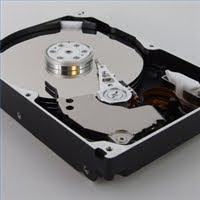Gejala :
Setelah dihidupkan, tidak ada tampilan di monitor, lampu
indikator (led) di panel depan menyala, lampu indikator (led) monitor
berkedip-kedip, kipas power supply dan kipas procesor berputar, tidak ada suara
beep di speaker.
Solusi :
Langkah pertama lepas semua kabel power yang terhubung ke
listrik, kabel data ke monitor, kabel keyboad/mouse, dan semua kabel yang
terhubung ke CPU, kemudian lepas semua sekrup penutup cashing. Dalam keadaan
casing terbuka silahkan anda lepaskan juga komponen-komponen lainnya, yaitu
kabel tegangan dari power supply yang terhubung ke Motherboard, harddisk,
floppy, hati-hati dalam pengerjaannya jangan terburu-buru. Begitu juga dengan
Card yang menempel pada Mboard (VGA, Sound atau Card lainnya). Sekarang yang
menempel pada cashing hanya MotherBoard saja. Silahkan anda periksa
Motherboadnya dengan teliti, lihat Chip (IC), Elko, Transistor dan yang lainnya
apakah ada yang terbakar.
Jika tidak ada tanda-tanda komponen yang terbakar
kemungkinan Motherboard masih bagus, tapi ada kalanya Mboard tidak jalan karena
kerusakan pada program yang terdapat di BIOS.






